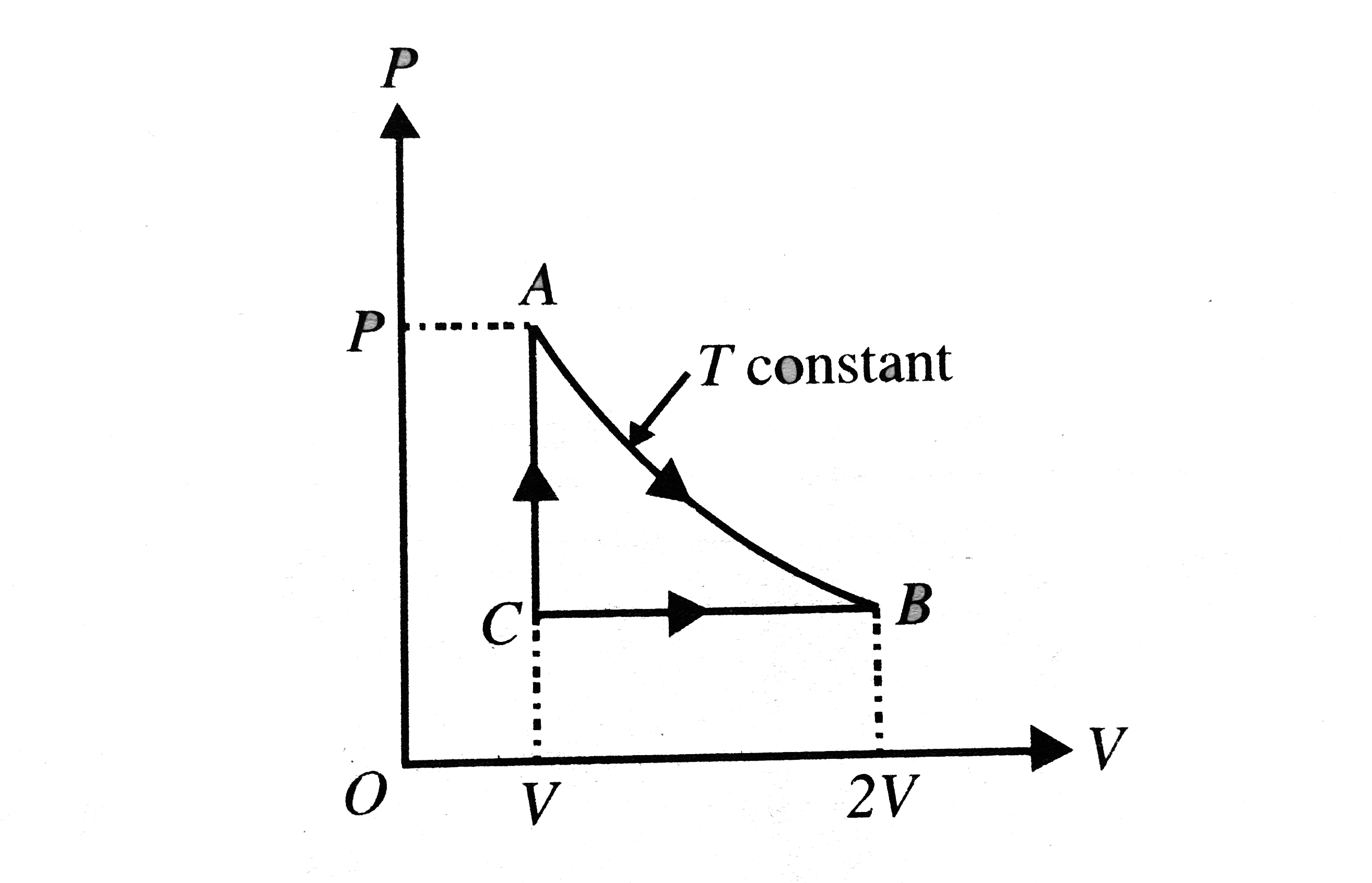An ideal monatomic gas expands isobarically from state A to state B. It is then compressed isothermally from state B to state C and finally cooled at constant volume until it returns to its initial state A.

How much work is done on the gas in going from B to C?
J
The correct Answer is:C
Step by step video & image solution for An ideal monatomic gas expands isobarically from state A to state B. It is then compressed isothermally from state B to state C and finally cooled at constant volume until it returns to its initial state A. How much work is done on the gas in going from B to C? by Physics experts to help you in doubts & scoring excellent marks in Class 12 exams.
Updated on:21/07/2023Topper's Solved these Questions
- THE FIRST LAW OF THERMODYNAMICSBOOK - RESNICK AND HALLIDAYCHAPTER - THE FIRST LAW OF THERMODYNAMICSEXERCISE - PRACTICE QUESTIONS ( INTEGER TYPE )
3 Videos
- THE FIRST LAW OF THERMODYNAMICSBOOK - RESNICK AND HALLIDAYCHAPTER - THE FIRST LAW OF THERMODYNAMICSEXERCISE - PRACTICE QUESTIONS ( MORE THAN ONE CORRECT CHOICE TYPE )
9 Videos
- TEMPERATURE, ZEROTH LAW OF THERMODYNAMICS AND THERMAL EXPANSION BOOK - RESNICK AND HALLIDAYCHAPTER - TEMPERATURE, ZEROTH LAW OF THERMODYNAMICS AND THERMAL EXPANSION EXERCISE - PRACTICE QUETIONS (Integer Type)
4 Videos
- THE KINETIC THEORY OF GASESBOOK - RESNICK AND HALLIDAYCHAPTER - THE KINETIC THEORY OF GASESEXERCISE - PRACTICE QUESTIONS
72 Videos
Similar Questions
An ideal monatomic gas expands isobarically from state A to state B. It is then compressed isothermally from state B to state C and finally cooled at constant volume until it returns to its initial state A.

How much work is done by the gas in expanding isobarically from A to B?
View SolutionAn ideal monatomic gas expands isobarically from state A to state B. It is then compressed isothermally from state B to state C and finally cooled at constant volume until it returns to its initial state A.

What is the temperature of the gas when it is in state B?
View Solution
Knowledge Check
In a change from state A to state B
Aq depends only on the initial and final stateBw depends only on the initial and final stateCΔE depends only on the initial and final stateDΔE depends upon the path adopted by A to change into B.In a change from state A to state B
A"q" depends only on the initial and final state.BW depends only on the initial and final state.CΔE depends only on the initial and final state,DΔE depends upon the path adopted by "A" to change into "B"An ideal gas change from state a to state b as shown in Fig. what is the work done by the gas in the process?
 AZeroBPositiveCNegativeDInfinite
AZeroBPositiveCNegativeDInfinite
One mole of a gas is carried through the cycle shown in Fig. The gas expands at constant temperature T from volume V to 2V. It is them compressed to the initial volume at constant pressure and is finally brought back to its original state by heating at constant volume. Calculate the work done by the gas in complete cycle.

View SolutionOne mole of monatomic gas is brought from state A to state B. The initial temperature at A is T0. The temperature at B will be –

View SolutionAn ideal gas change from state a to state b as shown in Fig. what is the work done by the gas in the process?

View SolutionAn ideal gas undergoes isothermal process from some initial state i to final state f. Choose the correct alternatives.
View SolutionIf a system undergoes an adiabatic change from state 1 to state 2, the work done by the gas is:
View Solution
